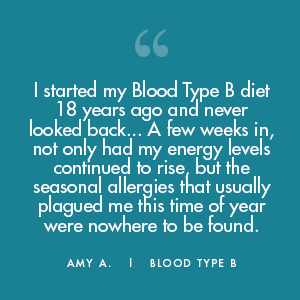Ready to leave?
Oops ! Condition name you have entered is invalid.
You are now leaving Aposbook.com and going to an external site managed by another organization.
Please confirm your email address and try to login again.
This account has been deleted. do you want to restore it?

Validate your email
A verification link will be sent to within the next 2 minutes. Please click it to validate your e mail.
*If you didn't get the link, please check your spam folder
Welcome to Aposbook,
As a registered user, you can benefit from the various free tools and services that we provide.
All you need to do is log in to start discussing with others, interacting, asking questions, and sharing your point of view about the various topics.
You can also write reviews and testimonials about any natural solution you have tried and share your experience. Your feedback can be very helpful.
If you are a health expert, you can add information about any topic or suggest text edit. You can also publish content, including articles and videos, about any topic from the related library section.
Together we can help.
The Aposbook Team
Forgot Password?
A validation link will be sent to you by email. Please confirm your address to log in
*If you didn't get the link, please check your spam folder
Please log in to use this feature
Your account has been suspended because you have violated our code of conduct. If you think this was a mistake, you can contact us by email at: support@aposbook.com "Contact us" form.
Success! Thank you for your feedback. Your contribution can make a difference. Together we can help each other.


Diseases and conditions
Allergy
Allergy: Causes, Symptoms, Prevention, and Natural Treatments
Complete Guide to Allergy

Allergic conjunctivitis
Allergic conjunctivitis is an inflammation in the conjunctiva - a mucous membrane that protects the eyeball and eyelids - triggered ...
Allergic conjunctivitis is an inflammation in the conjunctiva - a mucous membrane that protects the eyeball and eyelids - triggered by contact with shampoo, cosmetics, dirt, smoke, pool chlorine, or various allergens, resulting in an allergic reaction. The symptoms include:
- Redness under the eyelids and in the eyes
- Itchy eyes
- Membrane swelling

Asthma
Asthma is a type of allergy (but may also be unrelated) that causes respiratory problems due to inflammation ...
Asthma is a type of allergy (but may also be unrelated) that causes respiratory problems due to inflammation of the lungs and bronchial constriction that limits the flow of air into and out of the lungs.
It can be triggered by allergens such as pollen, dust mites, and pet dander. The allergens causing wheezing, chest tightness, shortness of breath, and coughing.

Bee sting allergy (Insect venom allergy)
A bee sting allergy is an allergic reaction that causes swelling and inflammation around the site of the ...
A bee sting allergy is an allergic reaction that causes swelling and inflammation around the site of the bite and, in severe cases, around the whole body. It can be life-threatening and requires emergency treatment because some people may develop anaphylaxis.
Symptoms include hives, swollen airways, wheezing, difficulty breathing and swallowing, increased heart rate, and decreased blood pressure.
People with bee allergies and insect poisons carry a self-injection epinephrine (adrenaline) kit and use it immediately if they are stung by a bee.

Chemical sensitivity
It is the inability to tolerate environmental chemicals such as pesticides, solvent vapors, and other air contaminants. The ...
It is the inability to tolerate environmental chemicals such as pesticides, solvent vapors, and other air contaminants. The symptoms may include:
- Breathing problems
- Nausea
- Headache
- Fatigue
- Cognitive dysfunction
- Cardiac arrhythmia
- Seizures

Drug allergy
An immune reaction to certain medications, such as penicillin, sulfonamides (sulfa drugs), anticonvulsant medications, or aspirin that may ...
An immune reaction to certain medications, such as penicillin, sulfonamides (sulfa drugs), anticonvulsant medications, or aspirin that may cause hives or other symptoms when taken.

Food allergy
A food allergy occurs when the immune system reacts excessively to a food or substance identifying it as ...
A food allergy occurs when the immune system reacts excessively to a food or substance identifying it as a hazard and thus triggers a protective response. For some people, the allergic reaction may be uncomfortable, but not serious, but for others, it can be life-threatening.
Food allergy symptoms usually develop within minutes to two hours after eating. The most common signs and symptoms of a food allergy may include:
- Tingling or itching in the mouth
- Wheezing, nasal congestion, or shortness of breath
- Hives or eczema
- Swelling of the lips, tongue, face, throat, or other parts of the body
- Diarrhea, nausea, vomiting, or abdominal pain
- Dizziness, lightheadedness, or fainting.
The main proteins that cause food allergy are usually in:
- Fish and shellfish such as shrimp, lobster, and crab
- Peanuts and nuts
- Wheat
- Eggs
- Cow milk
- Soy
According to the Center for Disease Control and Prevention (CDC), it is estimated that 15 million Americans have food allergies, including 5.9 million children under the age of 18. About 30 percent of children with food allergies are allergic to more than one food.
Food allergy versus food intolerance
A food allergy is different from an intolerance to a certain food. A food allergy is an allergic reaction triggered by the immune system, while a food intolerance response is caused by the digestive system.
Food allergy: food allergy is an immune system response to a food or substance in the food that is identified as a dangerous invader, and the immune system defends the body against it. Unlike food intolerance, a food allergy can be serious or even fatal, if someone eats a small amount, touches, or even inhales the food.
Food intolerance: food intolerance occurs when the individual cannot properly digest food due to enzyme deficiencies, are sensitive to food additives or react badly to chemicals that occur naturally in food.
Some of the main causes of food intolerance include:
- The absence of the specific enzyme needed to digest food. For example, when a person is lactose intolerant, they cannot digest the sugar found in milk. They lack the enzyme lactase that breaks down lactose properly.
- Food poisoning: this condition can mimic an allergic reaction when, for example, fish are not properly refrigerated and contain large amounts of bacteria that can release harmful toxins, triggering an immune response.
- Sensitivity to food additives: substances used to conserve food and wine can trigger allergic reactions in people that are sensitive to them.
- People with irritable bowel syndrome (IBD) may have cramps, constipation, and diarrhea.
Celiac disease is an autoimmune disease triggered by the ingestion of gluten, which a protein found in wheat. It has food allergy characteristics and involves the immune system. However, its symptoms are mostly gastrointestinal. People with celiac disease are not at risk of anaphylaxis or anaphylactic shock.

Hay fever (Rhinitis)
This type of allergy causes seasonal nasal symptoms and is the most common type of allergies. There are ...
This type of allergy causes seasonal nasal symptoms and is the most common type of allergies. There are two kinds of hay fevers: allergic rhinitis and non-allergic rhinitis.
Allergic rhinitis: mainly caused by furry animals, molds, or pollen. When a person with allergy breathes these allergens, they irritate and inflame the nasal passages.
There are two types of allergic rhinitis:
- Perennial allergic rhinitis: symptoms occur all year round and seasonally
- Allergic rhinitis: symptoms occur at a specific season.
Symptoms include:
• Itching
• Watery eyes
• Sensitivity to strong odors
• Pollution, climate change, smoking.
Medications for blood pressure, erectile dysfunction, and oral contraceptives may have side effects that trigger the symptoms.
Non-Allergic Rhinitis: occurs in adults and causes symptoms especially runny nose and nasal congestion throughout the year. Nasal decongestant sprays, such as oxymetazoline can cause medicinal rhinitis (when used for long periods).
People who have non-allergic rhinitis have the symptoms, but not the allergy, so avoiding the allergens is unnecessary and will not be of any help.

Latex allergy
A reaction to latex, a substance normally found in rubber gloves. The symptoms include asthma, pruritus, rash, hives ...
A reaction to latex, a substance normally found in rubber gloves. The symptoms include asthma, pruritus, rash, hives, watery eyes, and anaphylaxis.

Skin contact allergy
Skin contact allergy also called contact dermatitis. It is caused by direct contact with an allergen that produces inflammation ...
Skin contact allergy also called contact dermatitis. It is caused by direct contact with an allergen that produces inflammation and can lead to large open sores. There are several substances and products that can cause this allergy:
- Acid and alkaline industrial chemicals, such as detergents, solvents, or soaps.
- Topical medications such as antibiotics and anesthetics.
- Clothes made of fabrics like wool.
- Metals used in the manufacturing of jewelry
- Cosmetics and perfumes
Allergy Overview
An allergy is essentially the body’s reaction to a perceived danger. It is a chronic condition that causes an exaggerated reaction by the immune system in response to exposure to certain foreign substances.
These substances, known as allergens, are mainly harmless for non-allergic individuals and do not normally cause any bodily response, but for allergic individuals, the body recognizes these foreign substances as invaders. Subsequently, it triggers the immune system to generate an antibody response.
Allergies do not ...
Allergy Overview
An allergy is essentially the body’s reaction to a perceived danger. It is a chronic condition that causes an exaggerated reaction by the immune system in response to exposure to certain foreign substances.
These substances, known as allergens, are mainly harmless for non-allergic individuals and do not normally cause any bodily response, but for allergic individuals, the body recognizes these foreign substances as invaders. Subsequently, it triggers the immune system to generate an antibody response.
Allergies do not occur the first time a person gets exposed to the allergen. This will happen over time as the body starts building a certain sensitivity to the substance.
Some of the different types of allergens can include aeroallergens such as dust mite, mold, grass, pollen, and tree weed, or food allergens such as milk, egg, fish proteins, soy, wheat, and nuts.
When the body is exposed to an allergen, the immune system starts producing antibodies called Immunoglobulin E (IgE) that travel and attach themselves to special cells called mast cells.
When the allergen gets in contact with these antibodies, the mast cells respond by releasing histamine that causes an allergic reaction such as swelling and inflammation in certain areas of the body.
There are several types of allergies including food allergies, allergic rhinitis (hay fever), insect and drug allergies, seasonal allergies (winter, spring, summer, and fall), dust allergies, pet allergies, and eczema.
Some allergies are not as common as others. For instance, seasonal allergies result from contact with grass, weed, tree pollen, or molds during specific seasons. However, allergies to pet dander are very common.
More than 50 million Americans have an allergy of some kind, and while most allergies can't be cured, treatments can help relieve the allergy symptoms.
The severity of allergies varies from one person to another. Most allergic reactions are mild-to-moderate irritations that do not cause major problems, although they can cause extreme discomfort or irritation.
Nevertheless, some people might experience anaphylaxis (anaphylactic shock), which is a severe and potentially life-threatening allergic reaction that requires immediate life-saving medication.
Allergy History
The modern study of allergies began in the 1800s when Dr. John Bostock described hay fever for the first time in history. This continues to be one of the most common allergic reactions, affecting approximately 15 million people in the United States.
In 1869, the first skin test for allergies was documented. In this examination, a small cut was made in the patient’s skin. After that, pollen was introduced in the skin to evaluate the possible response to ...
Allergy History
The modern study of allergies began in the 1800s when Dr. John Bostock described hay fever for the first time in history. This continues to be one of the most common allergic reactions, affecting approximately 15 million people in the United States.
In 1869, the first skin test for allergies was documented. In this examination, a small cut was made in the patient’s skin. After that, pollen was introduced in the skin to evaluate the possible response to pollen.
In 1914, the idea of immunotherapy was first tested. The theory behind it was to build up the immune system through the administration of injections containing allergens to help people cope with their allergies. Through the constant exposure to the allergens in these injections, the individual gained resistance, resulting in a reduction of allergy symptoms.
In the late 1930s, antihistamines became widely used. They work on reducing histamines, which are human-made substances that create inflammation in the areas affected by the allergens.
In 1948, corticosteroids started to be used for allergies. A corticosteroid is a medication that reduces the immune system’s response. As a result, it reduces symptoms related to allergic reactions.
In 1953, the discovery of mast cells further developed the knowledge of the immune system and allergic reactions. In 1963, IgE antibodies were discovered, and that played a fundamental role in understanding the relationship between allergens and their reactions in the human body.
In the 1980s, Professor Samuelson won a Nobel Prize in Medicine and Physiology for his work with leukotrienes, which are human-made substances that cause inflammatory responses to foreign substances.
Nowadays, medicine has evolved tremendously, and there are several methods available to diagnose and treat various forms of allergies.
Allergy Symptoms
Allergies symptoms might vary from person to person, but they typically include itchy and runny nose and/or eyes, skin rashes, bowel irritation, and asthma.
The various symptoms related to the different types of allergies are listed below:
- Seasonal allergies: symptoms can be itchy eyes, nose, or skin; runny nose and/or watery eyes. You may also experience rash, sneezing, nasal congestion, wheezing, coughing, or dark circles under the eyes.
- Food allergy: symptoms can be nausea, stomach pain ...
Allergy Symptoms
Allergies symptoms might vary from person to person, but they typically include itchy and runny nose and/or eyes, skin rashes, bowel irritation, and asthma.
The various symptoms related to the different types of allergies are listed below:
- Seasonal allergies: symptoms can be itchy eyes, nose, or skin; runny nose and/or watery eyes. You may also experience rash, sneezing, nasal congestion, wheezing, coughing, or dark circles under the eyes.
- Food allergy: symptoms can be nausea, stomach pain, diarrhea, vomiting, tingling in the mouth, hives, and anaphylaxis. It can also include swelling of the lips, tongue, face, or throat.
- Hay fever: symptoms (allergic rhinitis): also called, can be sneezing, itchy nose, eyes or roof of the mouth, runny and stuffy nose, and also watery, red, or swollen eyes (conjunctivitis).
- Pet allergy: symptoms can be sneezing, runny or stuffy nose; facial pain (from nasal congestion); coughing, chest tightness, shortness of breath and wheezing; watery, red, or itchy eyes; skin rash or hives.
- Insect sting allergy: symptoms can be pain, redness, swelling (edema) at the sting site; itching, hives all over the body, flushing, cough, chest tightness, wheezing, shortness of breath, or anaphylaxis.
- Drug allergy: symptoms can be hives, itchy skin, facial swelling, rash, wheezing, or anaphylaxis.
- Atopic dermatitis ( eczema): symptoms can be itchy, red, or flakey skin or anaphylaxis.
Some types of allergies, including allergies to foods and insect stings, can trigger a severe reaction known as anaphylaxis or anaphylactic shock. It usually occurs when the allergen is ingested (food) or injected (bee sting). It can be an emergency that requires immediate medical attention. It can affect multiple organs at the same time. The blood vessels dilate, resulting in a drop in blood pressure.
The symptoms are:
• Hives or red discoloration of the skin
• Nasal congestion
• Swelling of the throat
• Stomach pain, nausea, vomiting
• Shortness of breath, wheezing
• Low blood pressure or shock
Allergy Causes
An allergy occurs because the body overreacts to substances such as allergens that are usually harmless. However, some people might develop hypersensitivity to these substances over time, triggering an allergic reaction.
The different allergens are classified into the subcategories listed below:
- Airborne allergens: such as pollen, dust, and mold.
- Some foods: such as peanuts, tree nuts, wheat, soy, fish, shellfish, eggs, and milk.
- Insect stings: such as from a bee or wasp.
- Pet fur: such as ...
Allergy Causes
An allergy occurs because the body overreacts to substances such as allergens that are usually harmless. However, some people might develop hypersensitivity to these substances over time, triggering an allergic reaction.
The different allergens are classified into the subcategories listed below:
- Airborne allergens: such as pollen, dust, and mold.
- Some foods: such as peanuts, tree nuts, wheat, soy, fish, shellfish, eggs, and milk.
- Insect stings: such as from a bee or wasp.
- Pet fur: such as fur from cats or dogs
- Household chemicals: such as triclosan, ammonia, or hydrochloric acid.
- Metals: such as nickel, chromium, and zinc
- Medications: such as penicillin or penicillin-based antibiotics.
- Some substances you touch: such as latex which can cause allergic skin reactions.
Allergy Risk Factors
Alongside the exposure to allergens, an allergic reaction can be also mediated by other factors such as genetics, environment, and diet.
- Genetics: while allergies can develop at any age, the risk of developing allergies is related to genetics and family history of allergy. Research has found that if neither parent is allergic, the chance of having allergies is about 15%, but if one parent is allergic, the risk can increase to 30%. If both are allergic, the ...
Allergy Risk Factors
Alongside the exposure to allergens, an allergic reaction can be also mediated by other factors such as genetics, environment, and diet.
- Genetics: while allergies can develop at any age, the risk of developing allergies is related to genetics and family history of allergy. Research has found that if neither parent is allergic, the chance of having allergies is about 15%, but if one parent is allergic, the risk can increase to 30%. If both are allergic, the risk of developing allergies can be 60%.
- Environment: studies have shown that there is a possible connection between the environment a person is exposed to during their childhood and the development of an allergy. Children that have been exposed to a large number of allergens might gain resistance to those specific allergens and retain that resistance throughout their adult life.
- Food diet: the gut microbiome (the microbes community living in the intestine) that is unique to every person is highly influenced by our food diet. Accordingly, it is a very important factor that can influence allergy by altering the immune system response. Hence, it can play a major role in our overall health as well.
Allergy Diagnosis
The individual’s medical history is the most important part of diagnosing an allergy. It is crucial to gather information regarding the patient’s health, lifestyle, genetic predisposition, and symptoms.
Along with that, the doctor can use skin testing, as it is the gold standard allergy test. Another less preferred option is blood testing. Both these tests can analyze the patient’s reaction to a great variety of allergens like plant pollens, molds, dust mites, animal dander, insect stings, and various ...
Allergy Diagnosis
The individual’s medical history is the most important part of diagnosing an allergy. It is crucial to gather information regarding the patient’s health, lifestyle, genetic predisposition, and symptoms.
Along with that, the doctor can use skin testing, as it is the gold standard allergy test. Another less preferred option is blood testing. Both these tests can analyze the patient’s reaction to a great variety of allergens like plant pollens, molds, dust mites, animal dander, insect stings, and various foods such as peanuts, eggs, wheat, shellfish, and milk. Testing also is available for some medications, such as penicillin.
There are two main types of skin tests available:
- The prick test: this test involves the doctor making various small punctures with allergens on the inside of your arms or back. These punctures are very small, so if they become red or swollen, it indicates an allergic reaction to that specific allergen.
- The intradermal test: this test involves the doctor injecting allergens in the very external and superficial part of the skin with a very small needle. This type of test is usually done when the prick test does not have a clear response.
In most cases, skin testing is very accurate, but allergy blood tests might be used in specific situations. For example, if the individual has severe skin rashes or uses a medication that interferes with the results of the skin test, it’s recommended to use allergy blood tests instead of skin tests to get more accurate results.
The blood drawn from the blood test is sent to a laboratory to evaluate if there are specific antibodies for the introduced allergen. The test is marked as positive for that allergen if the antibodies are present.
Natural Treatments for Allergy
Click on natural treatments for allergy to find the list of all the natural solutions to treat allergy and relieve its symptoms, including various diet programs, alternative medicine, vitamins, supplements, herbal medicine, prevention, and home remedies.
You can also go to www.aposbook.com to find all the natural treatments for any medical condition IN ONE CLICK.
Meanwhile, there is an array of natural solutions for allergies, many of which may help alleviate the severity of ...
Natural Treatments for Allergy
Click on natural treatments for allergy to find the list of all the natural solutions to treat allergy and relieve its symptoms, including various diet programs, alternative medicine, vitamins, supplements, herbal medicine, prevention, and home remedies.
You can also go to www.aposbook.com to find all the natural treatments for any medical condition IN ONE CLICK.
Meanwhile, there is an array of natural solutions for allergies, many of which may help alleviate the severity of symptoms. These can either help reduce the frequency of the allergy or provide relief for its symptoms.
Some of these natural cures work by controlling inflammation to control the allergy symptoms because when an allergy occurs, it is always accompanied by inflammation Other natural solutions focus on strengthening the immune system or making it less sensitive to allergens because an allergy is triggered by an exaggerated immune system response.
Using a combination of the treatments listed below would better help you overcome several issues and treat this condition more effectively. However, the best way to deal with an allergy is to prevent it by avoiding all the things that trigger it. These natural treatments include:
- Diets: different types of diets can be used to overcome inflammation to reduce allergy such as the anti-inflammatory diet. Some of these focus on consuming special types of food that have anti-inflammatory effects. At the same time, they exclude pro-inflammatory foods.
Other types of diets, such as the alkaline diet, work on regulating the blood pH and help reset it back to its normal level which is slightly alkaline between 7.35 and 7.45. Some health experts believe that having an alkaline blood pH can have tremendous health effects on the body, including strengthening the immune system and reducing inflammation. These diets can help cure many chronic diseases as well.
- Nutritional supplements: there’s a variety of nutritional supplements that can be used to fight allergies. Some supplements have anti-inflammatory properties that can fight inflammation in allergies. They can also ease allergy symptoms and help treat the condition. For instance, taking vitamin C daily strengthens the immune system and helps reduce histamine levels. Hence, it can reduce the intensity of allergic reactions.
Other supplements work on strengthening the immune system, which helps reduce the sensitivity to allergens and the intensity of the allergy symptoms.
- Herbal medicine: some special herbs and plants have anti-inflammatory effects that can help fight inflammation and treat allergy symptoms. For example, peppermint essential oil has anti-inflammatory effects that reduce the symptoms of allergic rhinitis.
- Immunotherapy: immunotherapy involves injecting the patient with allergens over a period of time, gradually increasing the dosage. The person’s immune system will then become stronger and less sensitive to the allergen.
Medical Treatment for Allergy
According to conventional medicine, there are no cures for allergies. However, patients can take prescription drugs that focus on relieving allergy symptoms. Some of these drugs include:
- Antihistamines: antihistamines are medications used mainly for hay fever and other allergies. These medications counter the effects of histamines, substances made by the body to help the immune system fight invading bacteria or viruses. Benadryl and Chlor-Trimeton are examples of antihistamines that relieve allergy symptoms but they can cause ...
Medical Treatment for Allergy
According to conventional medicine, there are no cures for allergies. However, patients can take prescription drugs that focus on relieving allergy symptoms. Some of these drugs include:
- Antihistamines: antihistamines are medications used mainly for hay fever and other allergies. These medications counter the effects of histamines, substances made by the body to help the immune system fight invading bacteria or viruses. Benadryl and Chlor-Trimeton are examples of antihistamines that relieve allergy symptoms but they can cause drowsiness.
- Decongestants: decongestants can help clear a stuffy nose and sinus congestion. These medications shrink the nasal blood vessels and open up nasal passages. One example of a decongestant includes Afrin Nasal Spray.
- Nasal Corticosteroids: nasal corticosteroids are medications that relieve symptoms by reducing the inflammation caused by an allergen. Examples include Flonase and Nasacort can help relive nasal stiffness, sneezing, and a runny nose.
- Epinephrine: auto-injectable epinephrine is used to treat life-threatening allergic reactions. It is used to reverse potentially fatal symptoms, such as difficulty breathing, throat swelling, a weak pulse, and hives. Examples of auto-injectable epinephrine include EpiPen or Auvi-Q.
Allergy Prevention
Visit the Allergy Prevention Center to check all the information on how to prevent it or reduce its symptoms, including the different lifestyle changes to make, recommendations to follow, and things to avoid.
Allergy Prevention
Visit the Allergy Prevention Center to check all the information on how to prevent it or reduce its symptoms, including the different lifestyle changes to make, recommendations to follow, and things to avoid.
Explore other Diseases and conditions
Natural Treatments for Allergy
Allergy Dos and Don'ts
Keep the house windows closed especially at night to prevent pollen or molds from drifting into your home. You can also use air conditioning to clean, cool, and dry the
Stay inside on windy days, especially when dust and pollen are blowing around or humidity is high.
Take the recommended dosage of the allergy medications prescribed by your allergist regularly.
Check the ingredients of products you buy from supermarkets to see if they contain any allergens. Always ask the waiter about the ingredients of the food you order in
This test helps you recognize the exact ingredients in food that might trigger allergic reactions in your body.
Keep car windows closed when traveling to prevent pollen or molds from drifting into the car.
Plants are nice to have inside your home especially for their decorative and psychological values. However, most plants can bring pollen and cause you allergies. Some of
Mowing lawns or being around freshly cut grass stirs up pollen and molds.
Some household chemicals might trigger an allergic reaction. Check the chemical composition of the household products before you use them.
Most flowering houseplants can cause airborne allergens because of their pollen production. So, if you have allergies, you should avoid indoor plants. Some of the worst
Dos and Don'ts
Library center Allergy
Success storiess

Homeopathy For Allergies

Amy A. - Blood Type Diet Success Story

How I Cured My Seasonal Allergies






































[0]